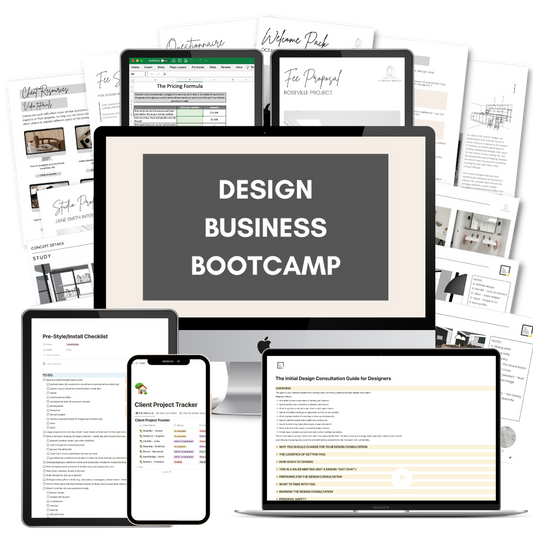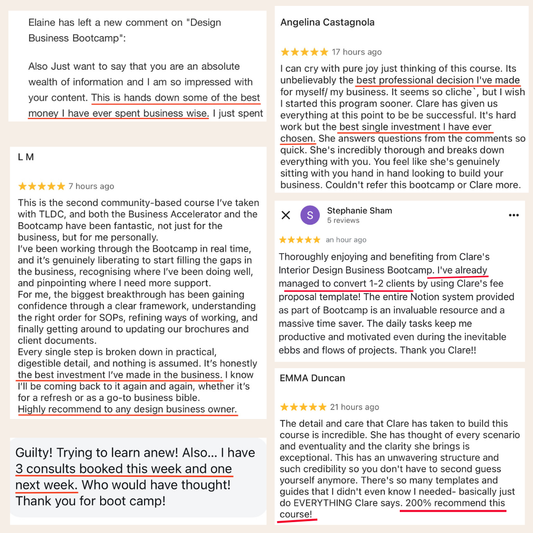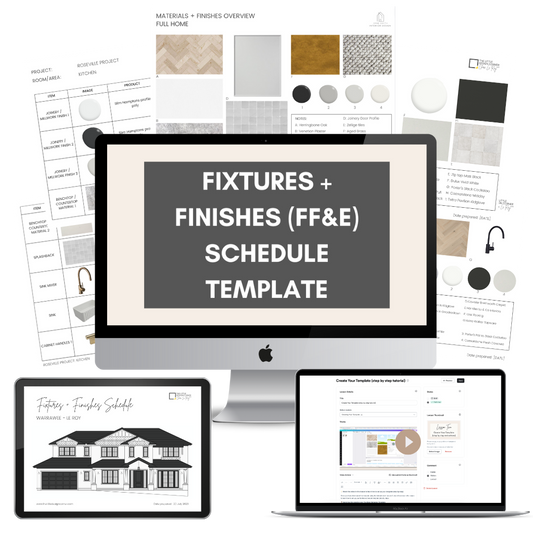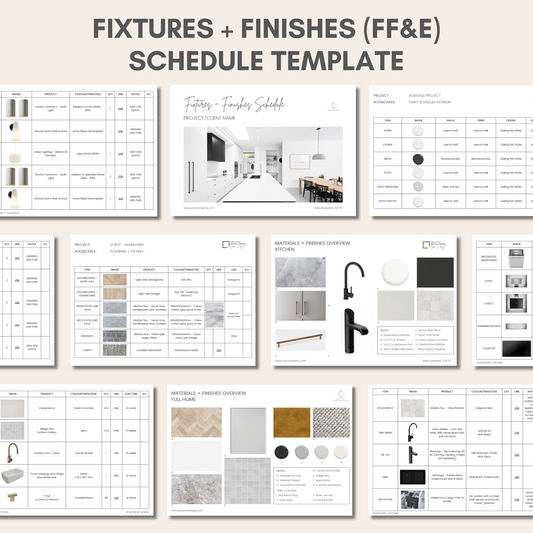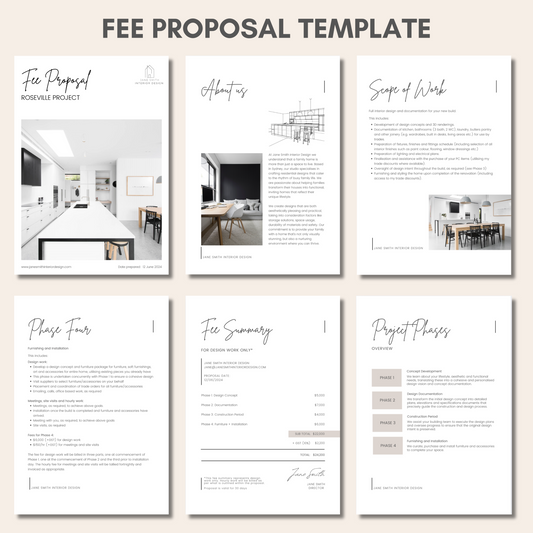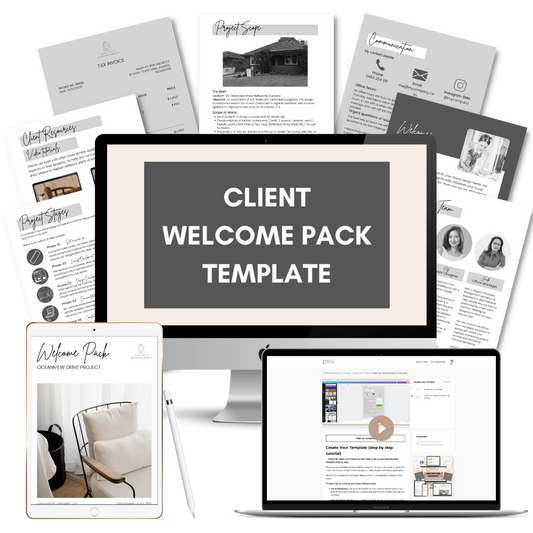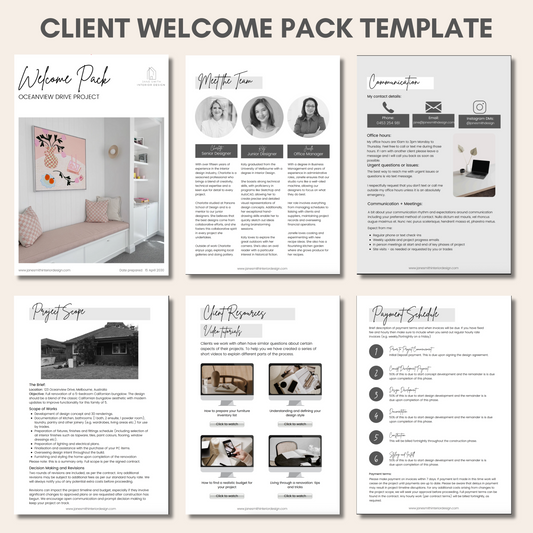In this post I share 8 ideas about how to name your creative business.
Although this is an important step of your business creation journey, I don’t want this to be something that bogs you down or holds you up. At the end of the day it doesn’t really matter what you end up naming your business as the most important thing is going to be how you build your brand and reputation over time.
Remember that names like Google, Twitter or IKEA had no meaning when they were first created – and look at those companies now!
But having said that there are a number of key things to consider as you think about naming your business including making sure that it is clear, easy to remember and also avoids legal troubles. And that’s what I want to share with you today.
1: Don’t make it too clever or overly complicated
Try and keep your business name to a few words that are easy to spell and make sense. My own business name – The Little Design Corner - is a great example of what NOT to do here haha!
This name is way too long, it’s hard to say and it’s tricky to type quickly. I also often have people think that my business is called some variation of the name - like ‘The Little Designer Room’ or ‘The Design Corner’. So this suggests that it’s not super easy to remember and makes it a less than ideal business name!
Although I’m stuck with my business name :) learn from what I did wrong with the naming of my own business and keep yours short and easy to remember.
2: Make it easy to spell
You also don’t want your business name to be confusing to spell.
You want people to know how to find you online easily when you say the name of your business. Think about business names like Flikr, the photo sharing site – where the ‘e’ was dropped out of the word. If people were trying to find Flikr.com and didn’t know about the brand they would most likely type in fliker.com. So avoid names where you will have to be continuously correcting the misspelled version of the name.
3: Choose a name that won’t place limitations on you as you grow
Think about different iterations of how your business might change and grow over the years.
Avoid using very niched names – e.g. Le Roy colour consulting would have been a bad name for me to choose when I first started my business as if I ever wanted to move in to bathroom or kitchen design down the track then I would be constrained by my name. I would also avoid using locations – e.g. The Sydney Design Studio. In today’s globalised environment you just never know when you might want to move in to online offerings that sell around the world or even physically move outside of your current city. Don’t let your business name be tied to a physical place unless there’s a specific reason for it.
Lots of students in my business courses ask me whether they can/should use their own names in the title of their business. I am not against this in principle, in fact many well known design firms have the names of the founders as part of it and this is reasonably common in the design world. Think about Arent & Pyke, Fiona Lynch, Greg Natale, Flack Studio and Studio McGee.
But If you are going to use your name just be really sure you will be happy with this as your business grows. And if you ever think you may want to sell your business having your name in it is not necessarily the best idea as it becomes more of a personal brand than a saleable asset. Plus if you think you want to create a brand that is bigger than you and will stand alone from you at some point then having your name in the business title isn’t that helpful either.
Think about Kate Spade and Bobbi Brown who both ended up having to effectively sell their own names when large corporations bought out their companies! Although your business may never become quite as large as Bobbi Brown - it’s still something worth considering up front.
4: Try to use keywords from your niche
If you can find a way of including good keywords in your business name then go for it.
This will help your rankings in Google and helps make it immediately clear what your business is about. But a word of warning here - don’t make your name all about search terms. You want it to be people friendly – not Google friendly! But it never hurts to have a sprinkling of good key words in there.
Also try and make your name meaningful. Names like Google and Twitter sound good now, but they were meaningless to begin with. These sorts of names will take a lot more effort to create brand awareness as it’s not immediately clear what service is being offered or what problem is being solved.
Another thing to just make sure of – and this is unlikely to be an issue with creative business names – is also to make sure you avoid any controversial words in your business name. Facebook, for example, won’t run advertisements that have controversial words in them – like swear words, words about or around sex or overly explicit words and content. As I said, this is unlikely to be an issue here but something to just be aware of as you name your business. Also be aware of words that have double meanings (with one meaning not being all that Google/Facebook friendly!) or be aware if you want to use your own name as the business name but have a controversial word in them (e.g. my kids used to have a teacher called Mrs Bottomly….so probably not a good one to use as a business name - you get the idea!)
5: Check nobody is using the name
If you’re in Australia you will want to make sure you do a check that nobody has registered your proposed business name as their own trading name as you can run in to legal troubles down the track. It’s also worth doing a trademark search as well.
To check trading names in Australia use this website: https://businessname.com.au/
If you’re outside Australia check your local country for a similar registered business or trading name search. There will more than likely be similar websites for your location.
Don’t skip this step or you risk getting in to legal hot water down the track and could be sued.
6: Make sure you can get the domain and social channels for your name
Once you’ve settled on your name the next step you’ll want to do is make sure you can get the domain names and social handles. If you can't - back to the drawing board!
To check this, go to each platform and do a check by searching for your name. You ideally want your handle and domain name to be your exact business name for consistency.
You also want to make sure you can get the same social media handles across all social platforms. Again using my own business as an example of how not to do it.
For my social handles – on Instagram and Facebook I am fine – my handle is @thelittledesigncorner, but when I eventually went to get the handle on Pinterest I became aware that the full name of my business was too long for their required number of characters in their handle – so I had to change that handle to @theldc – which isn’t ideal (I’ve since changed my Pinterest handle to @clareleroy).
So here’s a checklist of the places I suggest you check and make sure you can get all your social handles:
-
Go Daddy – search to see if you can ideally get the .com domain. Most of these are now gone so it can be tricky.
-
Instagram
-
Facebook (check business page names)
-
Pinterest (is the name short enough to fit in their character requirements?)
-
Twitter (if you plan to use this)
-
LinkedIn
-
YouTube
7: Get feedback from family and friends
Once you’ve decided on your name and you know it’s available – before you purchase any domain names try your name out on friends and family. For bonus points try it out on people who you would identify as your ideal client as at the end of the day these are the people you will be trying to attract.
Ask them:
-
Does the name resonate with them?
-
Does it give them any negative connotations?
-
Does it translate to something rude or insulting in a different country or is it culturally insensitive? (Have a read about Kim Kardashian’s naming of her shape wear business Skims - which she originally called Kimono - if you want to see an example of how this can go very wrong!)
Try and get 5-8 people to give you advice on your name and ask them the questions above.
8: Do a gut check
Finally, once you’ve decided on your business name sit with it for a day or so if you can.
Don’t rush out and purchase all the domain names and social handles straight away. This is going to be the name of a business you are hopefully going to have for years to come, so make sure you are happy with it and feel that it will resonate with your ideal client. Take time to make sure you feel really comfortable with the name – but don’t take too long on this step – definitely no more than a few days.
Also – don’t forget to practice saying your name out loud. The Little Design Corner is a real tongue twister to say fast out loud - so learn from me and don’t make the same mistake! :)


